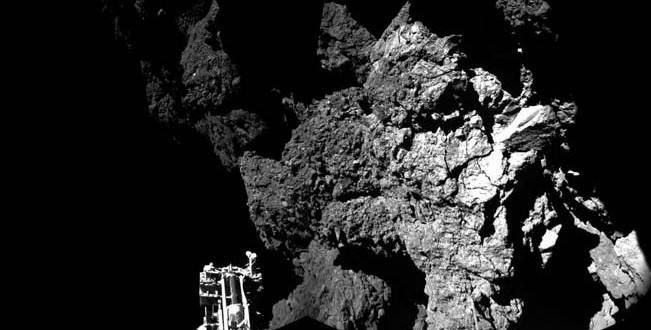The European Space Agency’s (ESA) robotic probe Philae, which landed on a comet Wednesday, is stable after falling into trouble initially, media reported Thursday.
The lander scored an historic first on Wednesday when it touched down on comet 67P/Churyumov-Gerasimenko after a decade-long journey through space on its mother ship Rosetta.
Researchers’ jubilation was slightly dampened because the harpoons which were meant to anchor the lander to the surface failed to deploy, causing it to bounce twice before it came to rest on the comet’s body, or nucleus.
“Philae is stable, sitting on the nucleus and is producing data,” Gerhard Schwehm, a scientist on the Rosetta mission, said. “The lander is very healthy,” he added.
The photos sent back to Earth show a rocky surface, with one of the lander’s three feet in the corner of the frame.
Scientists are still analysing what effect the two bounces had on the spacecraft and plan to release further details at a news briefing.
Schwehm said it may still be possible to fire the harpoons, but that this would be done only if it doesn’t imperil the lander.
A key question is whether Philae’s drill can be used to extract samples from beneath the surface without pushing the lander into space. Gravity on the comet is 1/100,000th that of Earth, meaning the washing machine-sized lander weighs just 1 gram (0.04 ounces) there.
Philae and Rosetta will use 21 instruments to analyse the comet over the coming months. Scientists hope the 1.3 billion euro project (1.62 billion US dollars) will help them better understand comets and other celestial objects, as well as possibly answer questions about the origins of life on Earth.
Agencies/Canadajournal
 Canada Journal – News of the World Articles and videos to bring you the biggest Canadian news stories from across the country every day
Canada Journal – News of the World Articles and videos to bring you the biggest Canadian news stories from across the country every day



